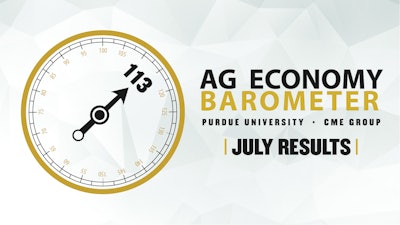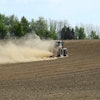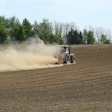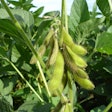
In July, a trio of agricultural sentiment indicators reported positive shifts despite ongoing challenges in the farming sector, according to the latest Purdue University/CME Group Ag Economy Barometer. The overall index rose 8 points to 113, buoyed by improvements in both current conditions and future expectations.
The survey, conducted from July 15-19, 2024, revealed an uptick in the Index of Current Conditions to 100 and a 7-point rise in the Index of Future Expectations to 119. This comes in spite of significant declines in corn and soybean prices, which dropped 11% and 5% respectively, in the Eastern Corn Belt from mid-June to mid-July.
"Fewer respondents reporting worsened conditions compared to last year and a decrease in those expecting negative outcomes contributed to the positive sentiment this month," stated James Mintert, the barometer’s principal investigator and director of Purdue University’s Center for Commercial Agriculture.
However, high input costs remain a primary concern for 34% of farmers, closely followed by the risk of lower crop and livestock prices, cited by 29% of respondents. Interestingly, concerns about rising interest rates have eased, with only 17% viewing them as a top concern, down from 23% last month.
The Farm Financial Performance Index reflected ongoing anxieties, dropping 4 points to 81, indicating lower expectations for financial performance amidst falling commodity prices and high input costs. Despite these financial pressures, the Farm Capital Investment Index saw a minor improvement, rising 6 points to 38, as fewer producers felt it was a bad time for large investments.
The survey also noted shifts in farmland value expectations. The Short-Term Farmland Value Expectations Index edged up to 118 from 115, driven by more respondents anticipating stable farmland values over the next year. Conversely, the Long-Term Farmland Value Expectations Index fell 6 points to 146, with fewer farmers expecting long-term increases.
As preparations for the 2025 crop year's farmland leases get underway, 72% of crop farmers expect cash rental rates to stay consistent with 2024 rates, with the remainder nearly split between expecting increases or decreases.
This mixed picture highlights the complex landscape U.S. farmers navigate as they balance operational costs with market opportunities and investment planning.
















